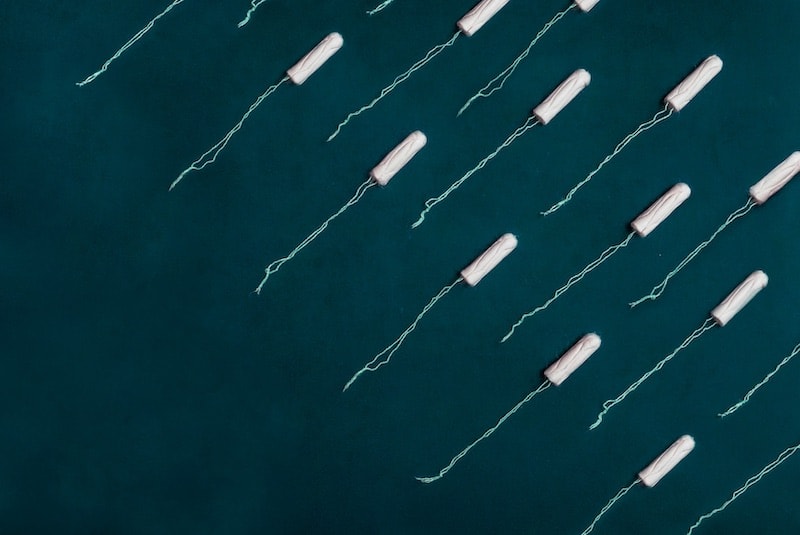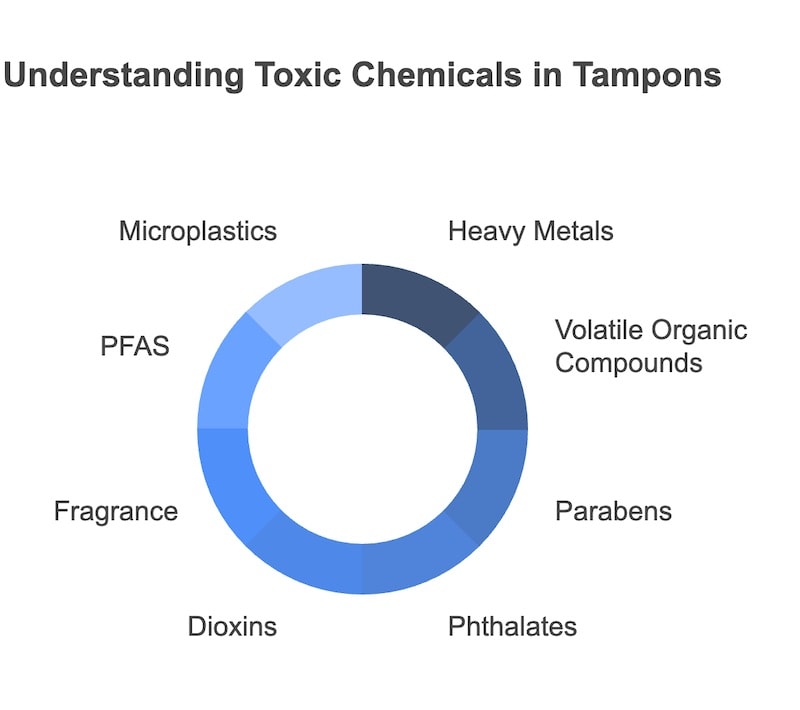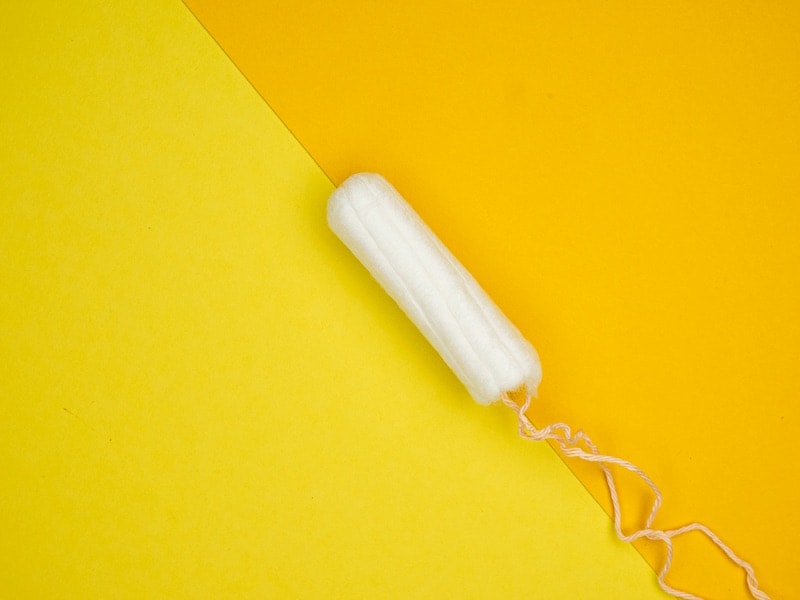Table of Contents
Are You Aware of the Heavy Metals in Tampons?
This page may contain affiliate links. We may earn a commission on purchases, at no additional cost to you. Learn more →
Are you aware of the heavy metals in tampons? This topic has recently sparked growing concern—and for good reason.
Menstrual products, especially tampons, often come into direct contact with sensitive tissue, allowing hidden contaminants to enter the bloodstream more easily. I remember picking up my usual box of tampons at the start of my cycle without a second thought. That changed when I read studies revealing the presence of toxic metals (like lead, mercury, and arsenic) and other chemicals in tampons.
Given how frequently these products are used—86% of women in the US and 42% in Europe rely on tampons monthly—understanding their potential risks is vital. Studies have detected heavy metals, including lead and mercury! The same metals we're warned about contaminate our food and water.
The presence of heavy metals in tampons is emerging as a significant public health concern, especially given how many people use these products monthly.
Considering how tampons interact with sensitive tissue, this is a conversation we need to have—not to alarm, but to critically inform. It’s time to be aware of the facts, recognize existing gaps in research, and better understand how these products might impact our health—so we can demand safer options and greater transparency.
Let’s explore what’s lurking in tampons, from heavy metals to newer concerns like PFAS and microplastics, as well as recent moves toward stricter regulations.
Understanding Tampons and Their Composition
Tampons have been around for centuries, with their modern design emerging in the 20th century, to offer more convenience and flexibility. Today, in the modern world, they are indispensable to many, with the average person using around 7,400 tampons over their lifetime, if you're using four tampons a day!
Tampons are more than cotton on a string. Their absorbent core is often made from cotton, rayon or a blend of both. Organic tampons stick to 100% cotton, but many conventional tampons include synthetic fibres, fragrances, dyes, and other additives!
These extras may improve aesthetics and texture, but they introduce unwanted chemicals, making tampons one of the many everyday products that contain questionable substances—often with minimal oversight or disclosure.

What Causes Toxic Metals in Tampons?
The manufacturing process from raw cotton to a finished tampon, has lots of opportunities for potential contamination:
-
Bleaching: Chlorine bleaching has historically been used to whiten tampons. While many manufacturers now use a chlorine-free process, questions remain about residual chemicals (e.g., dioxins) and trace metals introduced during these alternative bleaching methods.
-
DyeingAesthetic dyeing often adds more chemical residues, including potential metal contaminants.
-
Farming practices: Cotton crops in polluted soil can absorb heavy metals like lead and arsenic, these metals leach and can accumulate in the plant, which is then used to manufacture our tampons. Pesticides and fertilisersalso contribute to contamination, as arsenic is found in many fertilisers

Do tampons contain heavy metals?
Metals such as mercury, lead, arsenic, and cadmium have all been found in tampons. These metals are highly toxic; even at low levels, they can accumulate in the body over time.
A recent study found toxic metals in tampons and detected all 16 metals in at least one tampon sample, with 12 metals found in 100% of the products tested.
-
Lead study author, Jenni Shearston stated that "we found 12 of the 16 metals we tested for, including some toxic metals like lead, present in 100% of the tampons we tested".
Shockingly, lead - a metal with no known 'safe' exposure level - was in all tampon samples.
Interestingly, while non-organic tampons showed higher lead concentrations, organic cotton tampons had higher levels of arsenic - highlighting how manufacturing processes can affect metal content in complex ways.
While heavy metal concentrations in tampons are low, these chemicals can accumulate in the body over time and have negative health effects. The increased risk comes with vaginal tissues being highly absorbent, allowing substances to pass into the bloodstream more easily compared to other routes. Alarmingly, there is little research on exactly how metals absorb through vaginal tissues, leaving critical questions unanswered.
In Germany, a 2024 test by ÖKO-TEST on 23 tampon products also detected heavy metals but generally at lower levels compared to some US samples. Although the German Federal Institute for Risk Assessment (BfR) states these levels might be “negligible” in an extreme worst-case scenario, the agency also emphasizes there is no safe threshold for lead—and urges manufacturers to keep reducing these contaminants. But without more comprehensive data on absorption via vaginal tissue, the public cannot be fully reassured.
What are the toxic chemicals in tampons?
Beyond toxic metals tampons may contain a range of other substances such as dioxins, volatile organic compounds (VOCs), phthalates, parabens, and synthetic fragrances.
-
Volatile organic compounds (VOCs) - Irritate sensitive tissues and may disrupt mucosal health.
-
Parabens and phthalates - Linked to hormone disruption; used to prevent bacterial growth or improve product flexibility.
-
Dioxins - Highly toxic byproducts of certain bleaching processes, classified as carcinogens.
-
Fragrance - ‘Scented’ or ‘fresh’ tampons often contain synthetic fragrance, known to irritate or sensitize delicate vaginal tissue; can also increase infection risk.

Health Risks: Why are heavy metals in tampons concerning?
The vaginal wall is an extremely sensitive mucous tissue, that has lots of small folds to increase its surface area. This anatomical feature allows heavy metals and other toxins to enter the bloodstream more easily—potentially posing health risks that exceed those from oral exposure.
Some of the potential health concerns related to long-term tampon use include:
-
Hormonal disruption: Metals like cadmium and lead can mimic or block natural hormones, affecting your endocrine system, causing menstrual irregularities, thyroid disruption and even fertility issues
-
Cancer risk: Heavy metals and dioxins are classified as carcinogenic, and are linked to cancers including cervical and uterine cancer, and others
-
Organ Damage: Metals like mercury and others can accumulate in the organs, like the liver, brain, or kidney, causing long-term toxicity, and may even result in chronic illnesses like kidney disease or neurological disorders

Photo by Reproductive Health Supplies Coalition on Unsplash
"Although toxic metals are ubiquitous and we are exposed to low levels at any given time, our study clearly shows that metals are also present in menstrual products and that women might be at higher risk for exposure using these products," explains Kathrin Schilling from Columbia University Mailman School for public health.
Other experts underscore that we simply don’t have enough data to declare these exposure levels ‘safe,’ especially for substances like lead, which has no known risk-free dose.
New Toxins to Watch For: PFAS and Microplastics
PFAS (Per- and Polyfluoroalkyl Substances)
PFAS are sometimes called “forever chemicals” because they don’t break down easily in the environment or the human body. They’re linked to hormone disruption, immune system issues, and potential cancer risks.
Emerging Research (2023–2024): PFAS have been detected in a range of consumer goods, including period products. Sometimes used for stain-resistance or moisture-wicking in period underwear, PFAS can also show up in tampons or packaging materials.
Given these are persistent and bioaccumulative, any PFAS presence in tampons is especially worrisome.
Microplastics in Menstrual Products
Microplastics have become a hot topic in environmental health discussions. Recent reports suggest that microplastics might be present in tampon packaging, applicators, or even the fibers themselves.
Lack of Long-Term Data: While research is ongoing, preliminary evidence indicates microplastics could enter and accumulate in human tissues, with unknown but potentially harmful long-term consequences.
Regulatory standards for heavy metals in tampons
The oversight of tampons varies across regions, the regulatory landscape for heavy metals in feminine hygiene products remain inconsistent:
-
In the US, the FDA (Food and Drug Administration) classifies tampons as medical devices, but there are no guidelines limiting the levels of heavy metals or other contaminants in them. Therefore, manufacturers aren't required to test for heavy metals or disclose chemical contaminants in their products.
-
In Europe, the EU implements stricter regulations regarding chemicals in menstrual products. The EU's REACHregulations (Registration, Evaluation, Authorisation, and Restriction of Chemicals) aim to limit the presence of chemicals in consumer products including metals and dioxins
Increased public awareness—sparked by new studies on heavy metals, PFAS, and microplastics—is pushing governments and health organizations to consider setting clearer guidelines, since the reporting of heavy metals in tampons by the study mentioned earlier in this article. Keep an eye out for new legislative proposals in the EU or US aiming to hold manufacturers to stricter standards and require transparent labeling.
How you can protect yourself: Alternative non-toxic menstrual products
Being mindful about the non-toxic products you use is a critical first step:
-
Look for certifications: Products labeled as organic or toxin-free (e.g., GOTS, MADE SAFE®) are less likely to contain harmful chemicals—though not automatically free from metals, as seen with arsenic in organic cotton.
-
Avoid added fragrance, dyes, or unnecessary additives: If you’re unsure, check whether the brand provides transparency on its manufacturing processes.
Brands taking the lead:
Some menstrual product companies are setting a new standard for safety, transparency, and sustainability by adopting proactive measures to address consumer concerns about harmful chemicals and environmental impact. These efforts include:
-
Obtaining Third-Party Certifications: Leading brands like Natracare* and Organyc* have achieved certifications such as GOTS (Global Organic Textile Standards), MADE SAFE®, and Soil Association Organic. These certifications ensure that products are free from harmful chemicals like pesticides, dioxins, and phthalates while adhering to strict environmental standards
-
Transparent Labeling Practices: Companies such as Lola* disclose all ingredients used in their products, including fragrances and additives, on packaging or websites. This transparency empowers consumers to make informed choices about what they use on sensitive areas of their bodies
-
Sustainable Manufacturing Practices: Brands like Natracare* and MoonPads* have introduced sustainablepractices such as compostable tampons and biodegradable packaging to reduce plastic waste. Others, such as Daye*, use sugarcane-based applicators and unbleached organic cotton to minimize environmental contaminants while maintaining product efficacy.
Alternatives to tampons:
Making an informed choice about menstrual products isn't always straightforward - even alternatives can come with their own considerations. Here's what I've learned through my research and personal experience:
Menstrual cups: I swear by menstrual cups, I have had one for almost a year and it can changed the game for me! Made from medical-grade silicone, they're reusable, eco-friendly, and free from heavy metals. However, it's worth noting that silicone quality can vary between manufacturers, so I recommend choosing cups from reputable brands with transparent manufacturing practices.
Organic Pads: Menstrual pads, specifically organic pads, can be safer disposable options than tampons. While organic pads avoid many of the chemicals found in conventional tampons, they're still made from materials that could contain trace contaminants. That said, they typically have less direct contact with sensitive tissue than tampons, potentially reducing exposure concerns.
Period underwear is gaining popularity, especially for its convenience and comfort—no more ruined underwear! While they're sustainable and reusable, recent studies have raised questions about PFAS (forever chemicals) in some brands' materials. If you're considering period underwear, look for brands that explicitly test for and certify their products as PFAS-free.

The key is to find what works best for you. Recognizing the trade-offs and staying informed will help you feel more confident about your decision, without falling into the trap of believing a “perfectly safe” product exists—as manufacturing standards and research often lag behind consumer needs.
Key Takeaways
-
Heavy metals (lead, mercury, arsenic) and other chemicals (dioxins, VOCs, phthalates, synthetic fragrances) can be found in tampons, raising serious safety questions.
-
The vaginal wall is highly absorbent, which means toxins can more readily enter the bloodstream—potentially disrupting hormones, increasing cancer risk, and damaging organs.
-
Studies show non-organic tampons often have higher lead levels, while organic tampons can have more arsenic, illustrating the complexity of contamination sources.
-
PFAS (“forever chemicals”) and microplastics are emerging as additional threats in menstrual products, accentuating the urgency for better testing and tighter regulations.
-
While German tests indicate generally lower metal levels than some U.S. brands, no safe threshold for lead exists; experts remain concerned about understudied routes of exposure.
-
Demand transparency and safer manufacturing: Seek certified organic or toxin-free options, avoid fragrances/dyes, and consider alternatives like menstrual cups, period underwear, or organic pads to reduce exposure.
FAQ
Do tampons have harmful chemicals?
Yes, tampons can contain harmful chemicals, including heavy metals (lead, arsenic) and additives like PFAS or dioxins. Current regulations do not comprehensively limit these contaminants, leaving many questions about long-term safety.
What are the negative effects of using tampons?
The potential negative effects of using tampons include exposure to toxic chemicals that may disrupt hormones, increase cancer risk, or cause organ toxicity over time. Heavy metals like lead and cadmium can accumulate in the body and harm the nervous, endocrine, and reproductive systems. Additionally, improper tampon use (e.g., leaving them in for too long) can lead to rare but serious conditions like toxic shock syndrome (TSS). While the long-term health effects of chemical exposure from tampons remain unclear, concerns about their impact on sensitive vaginal tissues persist.
Bottom Line: While we may not have all the answers yet, evidence pointing to heavy metals and other contaminants in tampons underscores the need for more research, stricter regulations, and a push for transparency in the menstrual product industry.
Note: Always consult reputable sources (such as the German Federal Institute for Risk Assessment, or the FDA in the U.S.) to stay updated on new research, testing results, and any emerging regulations related to heavy metals in tampons.













